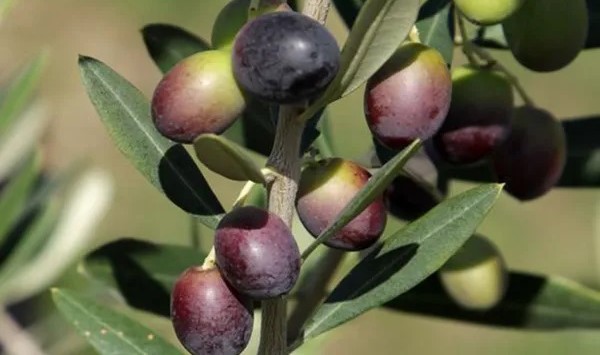Olive

The color of olives can vary, ranging from green to black, depending on their maturity and the variety of the olive tree. Green olives are typically harvested before they fully ripen, while black olives are left to mature on the tree. Some olives may undergo processes such as curing or fermentation to improve their taste and remove any bitterness.
Olives are commonly consumed in various forms, including:
- Table Olives: These are olives that have been cured or brined and are suitable for direct consumption. Table olives come in various flavors, from mild to intensely salty or tangy, depending on the preparation.
- Olive Oil: Olives are pressed to extract their oil, which is a fundamental component of the Mediterranean diet. Olive oil is used for cooking, as a salad dressing, and as a flavoring agent in various dishes.
- Olive Paste and Tapenade: Olives can be processed into a paste, often used as a spread on bread or crackers. Tapenade is a popular Mediterranean condiment made from olives, capers, and anchovies.
It’s important to note that raw olives have a very bitter taste due to the presence of oleuropein, a naturally occurring compound. Therefore, olives are typically subjected to curing, fermenting, or other processing methods to make them palatable for consumption.
Olive leaves
Olive leaves can also be used in various forms to harness their potential health benefits. Here are some common ways to use olive leaves:- Tea: Olive leaf tea is a popular way to consume olive leaves. To make olive leaf tea, simply steep dried olive leaves in hot water for about 10–15 minutes, then strain and enjoy. You can drink olive leaf tea plain or add honey or lemon for flavor.
- Capsules or tablets: Olive leaf supplements are available in capsule or tablet form at health food stores or online. Follow the dosage instructions provided on the product label or as recommended by a healthcare professional.
- Extracts: Olive leaf extracts are concentrated forms of the beneficial compounds found in olive leaves. They are available in liquid form and can be added to water, juice, or smoothies. Again, follow the dosage instructions provided on the product label or as recommended by a healthcare professional.
- Tinctures: Olive leaf tinctures are liquid extracts made by soaking olive leaves in alcohol or glycerin. They can be taken orally by adding a few drops to water or juice.
- Cooking: While less common, fresh or dried olive leaves can be used in cooking to infuse dishes with their flavor and potential health benefits. Add whole olive leaves to soups, stews, sauces, or marinades, or use dried olive leaves as a seasoning for meats, poultry, or fish.



